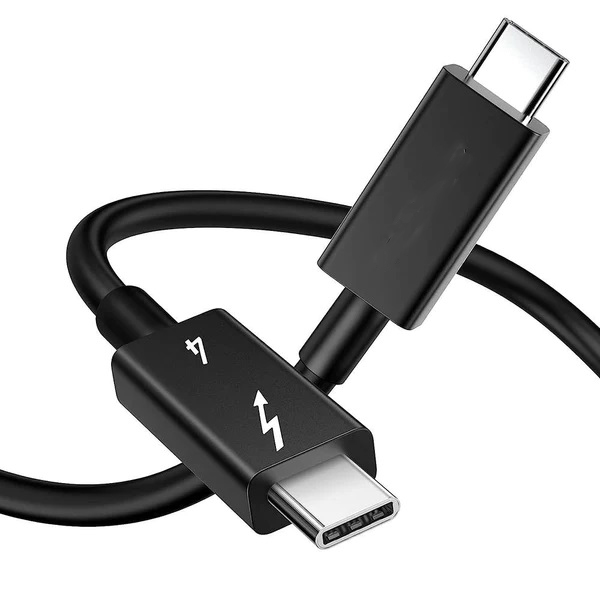Thunderbolt was developed by Intel in collaboration with Apple. Originally named "Guangfeng", it was later renamed "Pili". The first commercial product to feature Thunderbolt was the 2011 MacBook Pro.
Thunderbolt supports high-resolution displays and high-performance data in a single port, but it is not a connector. For example, Thunderbolt 1 on the MacBook Pro works with Apple's Mini DisplayPort port, and subsequent versions have been based on USB-C.
Thunderbolt 2, introduced in 2013, also uses the Mini DisplayPort connector. It has twice the transfer speed of Thunderbolt 1 (20Gbps). This makes it possible to transfer 4K video files while simultaneously sharing them in 4K on the monitor.
Released in 2016, Thunderbolt 3 eventually dropped the Mini DisplayPort connector. Instead, it switched to USB-C, which is in widespread use. Thunderbolt 3 has transfer speeds up to 40Gbps.
Thunderbolt 4 is still based on USB-C and can transfer data at speeds of up to 40Gbps. However, for Thunderbolt 4, 40Gbps is the requirement. Other advantages include support for dual 4K monitors, 32Gb/s PCIe SSD bandwidth speed and USB4 Compatibility rating.
The idea behind Thunderbolt was to create a way to send video signals and data over a single cable. That's why Apple got in on the act, as Thunderbolt allows it to minimize the number of ports on a Mac.
Thunderbolt's ability to run multiple devices through a single port is also a benefit. The daisy-chain capability opens the door for Thunderbolt docks and hubs. With a single port, you can easily expand the capabilities of your laptop.
Over time, Thunderbolt's advantage over USB has diminished. Thunderbolt 4 and USB4 have a lot in common. The main difference is the requirements.
